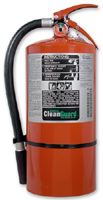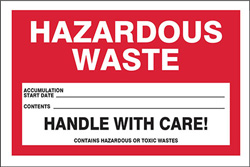| The Home page of ILPI's Safety Data Sheet (SDS) Resource, the leader in SDS information since 1995! | |
| The history and philosophy behind this resource. | |
| A curated collection of books and reference materials concerning Safety Data Sheets and closely related topics. | |
| Paste your plain text SDS into the SDS-Demystifier, and it will be converted into a hypertext-enriched document with links to detailed explanations of each key term. | |
| An extensive list of frequently asked questions about Safety Data Sheets including regulations, content, compliance, and more. | |
| A humorous take on Safety Data Sheet jargon. Fill in the blanks on our entry form to generate a personalized Unsafety Data Sheet to share with your coworkers. | |
| Since 1995, we've maintained this massive curated list of the best places to find Safety Data Sheets on the Internet. | |
| You are here! Way more than a glossary, this hypertext-enhanced resource covers hundreds of SDS-related terms and expert knowledge. Each entry includes both the SDS relevance and links to additional authoritative resources. | |
| Archived results of Safety Data Sheet related polls taken by some of our millions of site visitors | |
| The OSHA regulations behind SDS regulations, including the inspection guidelines and over 400 official interpretations letters under the Hazard Communication Standard | |
| Commercial suppliers of SDS authoring and management software as well as cloud compliance services. | |
| Commercial companies that will create SDS's for your specific needs as well as SDS translation companies. |

Safety signs, banners, and scoreboards? Get yours at Safety Emporium!
Definition
- Halogen refers to those elements in the seventeenth column of the periodic table, fluorine (F), chlorine (Cl), bromine (Br), iodine (I), and astatine (At):
- Halogenated refers to a chemical compound or mixture that contains halogen atoms.
- Halide refers to the monoanionic (one negative charge) form of a halogen atom, specifically, fluoride (F-), chloride (Cl-), bromide (Br-) and iodide (I-).

Additional Info

Protect sensitive electronic and laboratory equipment with Ansul CleanGuard extinguishers from Safety Emporium.
The elemental forms of the halogens are all diatomic (two-atom) molecules e.g. F2 (gas), Cl2 (gas), Br2 (liquid), and I2 (volatile solid). Astatine is not naturally occurring (only a few micrograms have ever been produced) so we will ignore it here.
In their elemental forms, all of the halogens are toxic, strong oxidizers, and very chemically reactive. Fortunately, only laboratory chemists tend to encounter these in their elemental forms.
Two broad classes of halogenated materials are:
- Ionic halides - Ionic materials are formed from positively charged ions (cations) and negatively charged ions (anions) which are held together by electrostatic attraction. If an ionic compound contains a halide anion we can call the material an ionic halide. When an ionic halide is dissolved in a solvent, it dissociates into its component ions.
The simplest example of an ionic halide is ordinary table salt, sodium chloride (NaCl), which dissociates in water to form Na+ and Cl- ions which are not bonded to each other. Halide ions are important electrolytes in the human body, and the fluoride ion is useful in preventing tooth decay. - Covalent halides - In a covalent molecule, the halide atom has a strong, directional chemical bond to another atom. If this other atom is a carbon atom we can call the material a halogenated organic molecule. If we are using this material to dissolve something we might call it a halogenated organic solvent. When a covalent halide dissolves, the halogen atom remains firmly attached to whatever it was bonded to and is not an electrolyte.
Some examples of halogenated organic materials are carbon tetrachloride, methylene chloride (dichloromethane), trichloroethylene, polyvinyl chloride (PVC), and poly(tetrafluoroethylene) [PTFE = Teflon™].
Some other terms that involve halogens are halocarbon (a halogenated hydrocarbon), chlorocarbon (a chlorinated hydrocarbon) and chlorofluorocarbon (CFC, a class of molecules containing Cl, F, and C that are useful refrigerants and extinguishing agents, but are also very bad for the ozone layer). You may also hear the term halogenated waste around the laboratory, because chemists often segregate their chemical wastes into halogenated materials and non-halogenated materials because it costs more to dispose of halogenated materials and because halogenated wastes are sometimes incompatible with other wastes.
Halogenated organic molecules are a very important class of chemicals that are used to produce a wide variety of other chemicals and consumer products. Unfortunately, chlorinated organic molecules are often health hazards and some are even known human carcinogens. Therefore, if you are working with a chlorinated material, you should pay particular attention to the SDS and other available health information.
A good rule of thumb is that the more chlorine atoms an organic molecule has, the more likely it is to be carcinogenic. Some examples of chlorinated molecules that are thought to pose health hazards include the following:


Make your PPE readily available with safety dispensers from Safety Emporium.
Books Available
NOTE: We may collect a share of sales or other compensation from the links in the following list:
- "Solvent Neurotoxicity", Hardcover, 400 pages, 1992. Estimated price $400.00. Includes very detailed info on several common halogenated solvents. Info and/or order.
- "New Types of Persistent Halogenated Compounds, Paperback, 384 pages, 2009. Estimated price $299.00. Includes very detailed info on several common halogenated solvents. Info and/or order.
- "The Non-halogenated Flame Retardant Handbook", Hardcover, 400 pages, 2014. Estimated price $173.36. Info and/or order.
- "Techniques for Measurement and Removal of Dioxins and Furans", Hardcover, 258 pages, 2017. Estimated price $131.00. Info and/or order.
- "Biochemistry of Halogenated Organic Compounds", Hardcover, 378 pages, 1991. Estimated price $162.00. Includes detailed info on several halogenated solvents. Info and/or order.
SDS Relevance
Always read the Safety Data Sheet for any material, but take particular care to read it for a chlorinated organic material. You can minimize your exposure to chlorinated organics by 1) reducing or eliminating their use, 2) using them only with proper engineering controls such as local exhaust ventilation or a fume hood and 3) using proper personal protective equipment (PPE) such as an organic vapor respirator (a paper mask does NOTHING), goggles, non-permeable gloves and an chemically-resistant apron. Also remember that many such materials are flammable.
Inorganic halides and ionic halides can pose varying degrees of risk. For example, titanium tetrachloride (TiCl4) reacts violently with moisture in the air to form dense clouds of HCl (an acid) gas. Even sodium chloride can pose hazards - NaCl reacts with sulfuric acid to give HCl(g) as a product. And you always wondered why table salt needs an SDS.
Two recent literature reports of significant injuries caused by injection of methylene chloride (dichloromethane) can be found in our necrosis entry. In neither case did the SDS address injection as a route of exposure. These cases underscore why it is critical to always maintain proper chemical hygiene practices regardless of what the SDS says (or doesn't say) in Section 11 (toxicological information). Remember, HCS 2012 does not require testing if there is no data; chemicals are presumed innocent until proven guilty.
Further Reading

Get your hazardous waste labels from Safety Emporium.
- View OSHA Standard 1910.1052 on the use of methylene chloride (CH2Cl2, dichloromethane) in the workplace.
- View the ATSDR entry on 1,1,1,-trichloroethane (TCA).
- The U.S. EPA has a Aqueous and Semi-Aqueous Solvent Chemicals: Environmentally Preferable Choices Guide and Wall Chart, although it is now a bit outdated.
- Questions and Answers about Dioxins and Food Safety an archived version of an FDA document.
- See the U.S. EPA's web site on PCB's as well as U.S. Federal Regulations on PCB's, 40 CFR 761.
- The US EPA also has pages on the topics of PCBs in Building Materials - Determining the Presence of Manufactured PCB Products in Buildings or Other Structures as well as Inadvertent PCBs.
- Do You Know How To Work Safely With PCB's? at the U.K.'s HSE.
- Guidelines for Segregating and Combining Chemical Wastes into Containers at the University of Pennsylvania.
See also: carbon tetrachloride, organic, solvent.